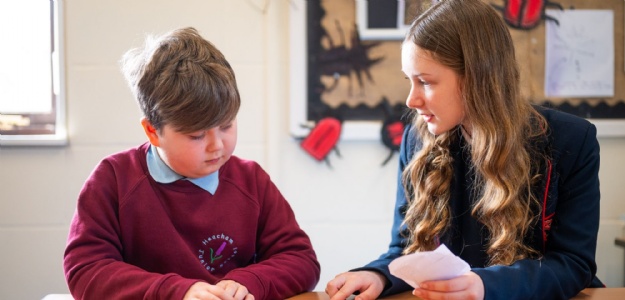WNAT students support younger pupils for British Science Week

Science students from a WNAT school put younger pupils through their paces as part of British Science Week, which ran from 10 to 14 March this year.
The ‘science ambassadors’ from Smithdon High School in Hunstanton spent the week visiting children at five nearby primaries, where they led a series of scientific experiments designed around a particular theme.
“A group of students from Year 8, Year 9, and Year 10 planned and delivered their six experiments, all linking to this year’s theme ‘Change and Adapt’,” explained Veronica Soper, Science Teacher at Smithdon.
“They included investigating bird beak shape adapted to different types of seeds; seed shape and dispersal method; the effect of lenses on the image production; static electricity; and the voltage supplied by coin batteries.”
The primary schools participating in the programme were Hunstanton, Dersingham, and Ingoldisthorpe, along with fellow WNAT members Heacham Junior, and Snettisham.
“We have been doing this for around eight years, I think,” continued Mrs Soper.
“During British Science Week, I take a different group of about 12 Smithdon students to a primary school each morning and help them set up and run their activities.
“It’s a great opportunity for our students to act as science ambassadors and role models for the younger students, and also for primary school children to meet and engage with those who are already at the secondary school many of them will attend in a few years’ time, supporting their transition.
“Many of those who get involved remember when we visited them in Year 3 and Year 4, and can even tell all the experiments we did that year.”
There were also British Science Week activities taking place within Smithdon, where the ‘Change and Adapt’ theme took centre stage over the course of the week.
“In school there was an assembly on how scientists adapt and change to new ideas, along with the changing careers in science – for example, more green careers, such as careers in renewable energy, electric cars et cetera,” said the school’s Head of Science, Claire Pike.
“Within lesson time, there were experiments to do with changes seen in chemicals, how animals are adapted to change, and how our climate is changing.”
